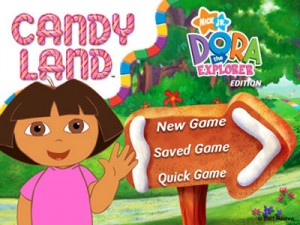 What do Dora the Explorer, Scooby-Doo and Shrek have in common? They’re persuading kids to eat less nutritious food, according to a study in the July 2010 Pediatrics journal (Volume 126. Number 1).
What do Dora the Explorer, Scooby-Doo and Shrek have in common? They’re persuading kids to eat less nutritious food, according to a study in the July 2010 Pediatrics journal (Volume 126. Number 1).
A team from The Yale Rudd Center for Food Policy and Obesity studied children’s taste for food that’s sold in cartoon-character themed packages, versus products in plain packaging. The verdict? Kids think the cartoon-themed food tastes better.
The study was done among 40 so-called “ethnically diverse” children 4-6 years old in New Haven, CT, preschools.
Health Populi’s Hot Points: Since Vance Packard wrote the seminal book on advertising, The Hidden Persuaders, in the 1950s, critics of Mad Men have argued against advertising and product promotion, from subliminal ad messages to marketing sugary cereals direct-to-kids.
Are children a “special” or “protected class’ when it comes to advertising?
To answer this questions, it’s useful to think about Public Health (in capital letters). Does society, in particular the U.S. populus, believe that ads should be regulated in some way when the public’s health is involved? The answer in many cases is ‘yes,’ such as the case for regulating direct-to-consumer ads for prescription drugs which are regulated by the FDA.
What about food? Does the American public see food as a public health issue? There is more than ample evidence that food and health are intertwined; that argument is a no-brainer. So, then, how to think about the regulatory regime for food-and-health, especially when it comes to kids?
For now, there is the public pressure that some advocates are bringing to bear on public policy, such as the Rudd Center here in Pediatrics, the Center for Science in the Public Interest, Michael Pollan, Alice Waters, and other healthy food proponents.
Parents have to be advocates in their own homes, as well. Childrens’ pressure can be compelling, espcially in busy households with working mothers (I know whereof I speak).
In response to this study, my 14-year-old daughter said, “If the food companies put healthy food into the colorful boxes with kids’ favorite characters on them, then when the kids grow older and no longer want the colorfully boxed food, they will eat healthier food because they’ll be used to it.”
Sounds like a great use of a pop culture healthy “nudge” from the mouth of a teen consumer who’s “been there.”





 Thank you FeedSpot for
Thank you FeedSpot for